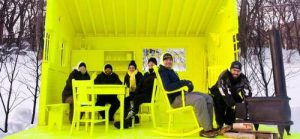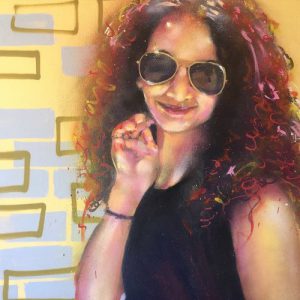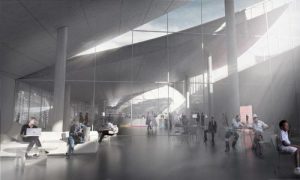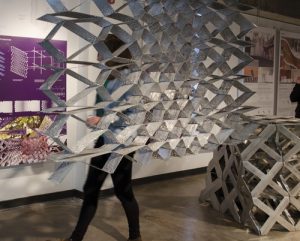The ArtHouse blog, Bread and Morter, interviewed the six semi-finalists that submitted proposals for ArtHouse’s public art commissions. Below are excerpts from the conversations. The selected artists will be announced in late May 2016.
Pike Projects / Raw Gallery Collaboration
Should your proposal be chosen as the winning artwork, how do you envision the Gary community would be involved in bringing the work to fruition?
From a physical standpoint, we hope members of the general population of Gary and the local steel industry can come together to assemble the work’s components on site as a team. Ultimately, the piece is incomplete unless occupied and, because it can be programmed in a very flexible manner, we look forward to seeing how the community will utilize it in ways beyond what we have imagined.

Continue reading about Pike Projects / Raw Gallery Collaboration
Felix “Flex” Maldonado Jr.
What do you want to convey about cities in your commissioned work of art (or in the process that leads up to its installation)?
I want to convey the fact that Gary has not been forgotten but is rather very alive and actually progressing. I believe in the people of this region, they are very resilient by nature and have no plans on giving up. but I also want to convey that change is good and that it starts with one’s self.

Continue reading about Felix “Flex” Maldonado Jr.
Nadi Design
Why do you feel that public art is important to communities?
We feel public art is important to communities because art is essential in creating communities. Public art activates dialogue within the community; it gives character to the spaces inhabited by the community and form landmarks/destinations in the fabric of a community. Public art aids in making places and spaces for communities to identify with, question and build memories around.

Continue reading about Nadi Design
Chris Silva
Does your approach to a public commission differ from the approach you take to other work, such as for private clients, exhibitions, galleries, or targeted audiences? If so, how? If not, why not?
Yes, absolutely. I avoid promoting despair in all my work, but my installation pieces often meditate on many of the unhealthy ways we treat our world. Because of that they can feel a little heavy, and I often think of them as visual blues songs. Some of my small personal work can also lean that way at times, but when it comes to large permanent public art, I focus on creating more clearly uplifting and joyful work. When I know things are going to be there for long term I feel that I should fully engage my idealism and try to represent the change I want to see in the world.

Continue reading about Chris Silva
Riccardo Mariano
Are there examples of public art works that have had an impact on you?
The Jewish memorial in Berlin by Peter Eisenman, is an inspiring example of a public artwork with great cultural significance becoming part of the city and its citizens’ everyday life. It is a work of art that allows both for interaction and reflection, being adaptable to the activities of visitors, while at the same time being strongly rooted in history.
Another artwork that comes to mind is by street artist JR and his Inside Out Project. where posters with portraits of the people living and working inside of a building were posted on its exterior, opening up the interior and making the inhabitants part of the street and public life.

Continue reading about Riccardo Mariano
Jeana Ripple, Ripple Architecture Studio; Barbara Brown Wilson, University Of Virginia
What motivated you to apply for the Bloomberg Philanthropies Public Art Challenge at ArtHouse? If you have a connection to Gary, what is it?
We are inspired by the vision for ArtHouse: a place that uses art and food to create both community and opportunity.
Jeana: I’m from the Midwest (Cleveland) and have lived in cities across Indiana, Ohio, Illinois, and Michigan. This led me to develop an architectural practice focused on collaboration with manufacturers as a way to promote the local economy. I’ve seen manufacturing form the heart of these cities and at times also struggle to re-invent itself.
Barbara: My work focuses on community engaged design and education programs. So the history of Gary’s education innovation is particularly compelling to me. Gary started a national movement in education, where students at community schools learned through a work/study/play model focused on learning by the tactile experiences of making.
Our combined interest in promoting local community and manufacturing made ArtHouse a particularly inspiring project.

Continue reading about Jeana Ripple and Barbara Brown Wilson
.